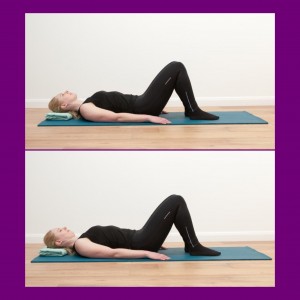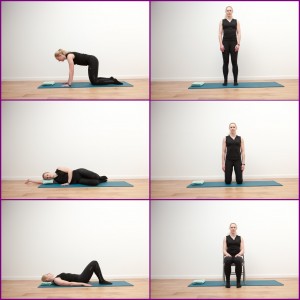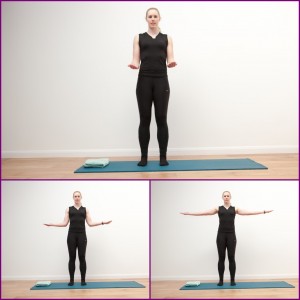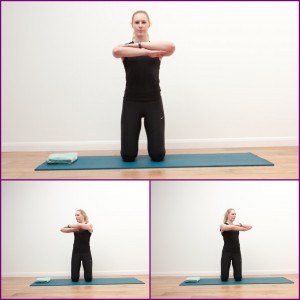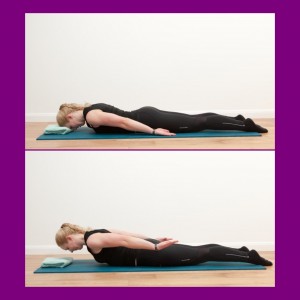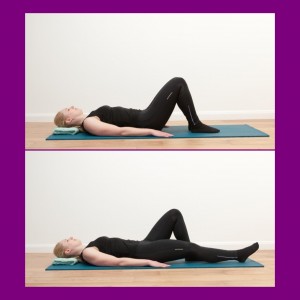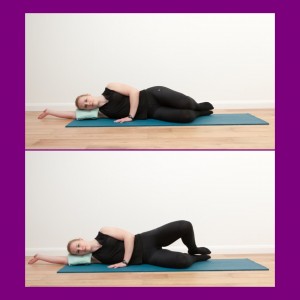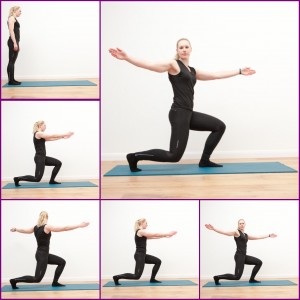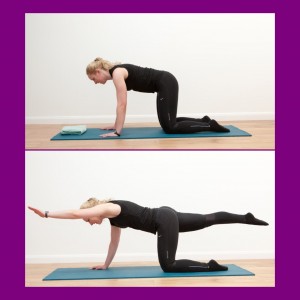As a physiotherapist, I regularly see patients who are unsure how and when to get back into exercise after giving birth, so I’ve written this article to help. As you’ll see, there are plenty of benefits to getting back into a safe workout routine. We’ll discuss what to do and how much, as well as looking at some of the complications that may occur and how to know if you’re overdoing it. I’ve also included some pilates-based exercises for you to try at home, based on your ability and desired challenge!
Benefits of exercise post partum
It’s great if you are motivated to get back to exercise after giving birth! It has many benefits, including:
- Promoting weight loss;
- Restoring muscle strength;
- Raising energy levels;
- Improving cardiovacular fitness;
- Reducing risk of urinary incontinence;
- Stress relief;
- Improving your mood; and
- Opportunity for increased social interaction.
However, after giving birth, the important questions are:
- How much is safe?
- And how soon should you return?
Everyone is different, so make sure you are following the individualised advice from your midwife. Your return to exercise will depend on several factors including:
- The strength of your pelvic floor muscles;
- The number of pregnancies you have had;
- The type of delivery (recovery following a caesarian will always be longer than a natural birth so you will therefore take longer to return to exercise);
- The level of exercise you were completing ante natally; and
- Whether you have any pelvic girdle pain (PGP) or diastasis recti (keep reading to find out more about these conditions).
If you had a normal birth, you should be able to start easing back into gentle exercise as soon as you feel ready. You should not start any high level or impact exercise until at least 6 weeks post partum, as long as your midwife clears you to do so at you 6-week check up (according to the NHS guidelines). However, 12-16 weeks post partum is probably a more realistic time frame because the weakness of your pelvic floor muscles following pregnancy will take time to retrain and strengthen. Doing too much exercise too soon can result in a prolapse which can be both uncomfortable and painful.
What is a prolapse?
A prolapse is when the organs in your pelvis drop down into the vagina, rather than being held in their normal position. This can result in a heaviness sensation, there may be bulging present, and it can result in pains or aching in the lower back and stomach.
Why do prolapses happen?
A number of factors associated with pregnancy can cause weakening of the pelvic floor muscles and surrounding ligaments. Your pelvic floor muscles are often left weak and stretched, and this will put you at increased risk of having a prolapse. This can happen for several reasons including:
- The weight of the growing baby;
- The pelvic floor muscles and ligaments may have been overstretched if you had a vaginal birth;
- You may not have completed your pelvic floor muscle exercises as often as you recommended during your pregnancy; or
- You may have increased your exercise too quickly after childbirth (returning to high impact exercise too early will put you at particular risk).
PGP & Diastasis Recti
Along with risk of prolapse due to weakened pelvic floor muscles, pelvic girdle pain (PGP) and diastasis recti will also play a part in how quickly you can return to exercise.
Pelvic girdle pain includes pain in one, or several areas around the pelvis:
- Pain over the pubic bone;
- Pain in you perineum (area between your vagina and anus);
- Pain across your lower back.
It is often aggravated by activities such as walking, climbing stairs, standing on one leg, or turning over in bed.
Diastasis recti is separation of the 2 muscles that run down the middle of your stomach. You can check for diastasis recti yourself:
- Lie on your back with your legs bent and your feet flat on the floor;
- Raise your shoulder blades off the floor and look down towards you belly button;
- Use the tips of your fingers to feel between the edges of the stomach mucles, where they should join in the middle, both above and below the belly button;
- See how many fingers you can fit into the gap between your muscles;
- If a gap of 2cm or more is present this is classed as diastasis recti.
You should notice this gap gradually decreasing over the first 8 weeks after the birth of your child.
If you think you may have either of these conditions, it will contraindicate (cannot do due to safety reasons) you from completing the intermediate or advanced exercises suggested in this article. It is advisable to see a physiotherapist or healthcare professional to help to improve or resolve these symptoms as soon as possible.
How do I know if I am overdoing it?
If you experience any of the following symptoms, you should reduce the level of exercise you are completing, or rest completely until they resolve:
- Fatigue
- Slow recovery from exercise
- Disproportionate muscle aches and pains for the level of exercise you have completed
- Increase in flow of lochia (vaginal discharge after giving birth containing blood, mucus, and uterine tissue)
- Change of colour of lochia to pink or red
- Lochia restarts flowing after it has stopped
Which types of exercise are safe to help you get back into sport post pregnancy?
Low impact exercises such as: swimming (once lochia has stopped), walking, yoga, and pilates are all great ways of easing you back into sport after pregnancy. Try the following exercises for an introduction to pilates!
***
Getting back into exercise: A pilates-based programme you can try at home!
All of the following exercises should be pain free to complete. If you experience any pain whilst completing them, or disproportionate aches or pains for the level of exercise you have completed following your pilates home session, stop and seek assessment and advice from a healthcare professional. Please closely follow the advice on exercise progression, and only progress to the next difficulty if you meet the criteria stated.
BASIC
These exercises should be safe to be completed by any new mum:
- This will help improve your upper body posture and neck pain
- Lie on your back with your head supported by a pillow
- Lengthen through the back of your neck, and push the back of your head down into the pillow (a bit like you are making a double chin)
- Hold for 10 seconds, then relax
- Repeat 10 times
Transversus abdominus & pelvic floor activation
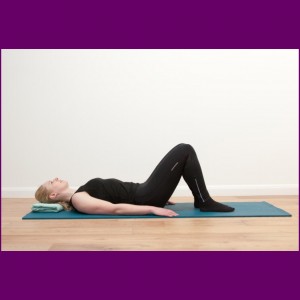
- This is the action of drawing your belly button in towards your spine, and drawing up through your pelvic floor muscles as if you are stopping yourself from going to the toilet
- This muscle activation exercise should be practiced in sitting, lying, standing, high kneeling, side lying & 4pt kneeling
- Hold the muscle contraction for 10 seconds, then relax
- Repeat 10 times
- Lie on your back with your knees bent (crook lying)
- Gently tilt your pelvis forwards and backwards
- You should feel your lower back arching and flattening on and off the floor
- Repeat this 10 times in each direction
INTERMEDIATE
If you have mastered the basic exercises, are not experiencing any pelvic girdle pain, and do not have diastasis recti, you should be safe to progress to completing these exercises:
- Stand tall, with your pelvis in a neutral position, engage your deep stomach muscles and pelvic floor muscles, and have your arms by your sides with your elbows bent
- Rotate your arms outwards, and stretch out to the side
- Then bring your elbows back into your sides and rotate your arms inwards to return to the starting position
- Repeat 10 times
- Kneeling up, with your pelvis in a neutral position, engage your deep stomach muscles and pelvic floor muscles, squeeze your bottom muscles (glutes), and cross your arms in front of you
- Keeping your pelvis pointing forwards, rotate through your middle back round to the left, then slowly back to the centre
- Repeat to the right
- Repeat 10 times in each direction
One leg stretch in 4 point kneeling
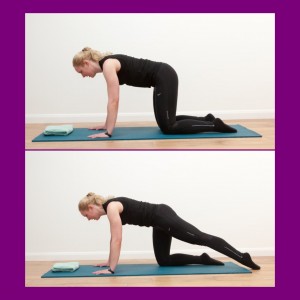
- On your hands and knees (knees under hips, & hands under shoulders), with your pelvis in a neutral position, engage your deep stomach muscles and pelvic floor muscles
- Slowly slide one foot back behind you, trying to keep your back and pelvis still
- Slowly slide your leg back in towards you, and repeat with the other leg
- Repeat 10 times with each leg
- Lie on your stomach with your hands by your sides, with your pelvis in a neutral position, engage your deep stomach muscles and pelvic floor muscles, and make sure you are aiming your tail bone down towards the opposite wall so your back isn’t arching
- Squeeze your shoulder blades back and down, lift your hands an inch from the floor, stretch them down towards your feet, and lift your head and chest an inch off the floor
- Slowly lower
- Repeat 10 times
- Crook lying (lying on your back with your knees bent), with your pelvis in a neutral position, engage your deep stomach muscles and pelvic floor muscles
- Slide one heel away from you, trying to keep your back and pelvis still
- Slowly draw your heel back into towards you
- Repeat on the other side – alternate legs
- Repeat 10 times on each leg
- Side lying, with your pelvis in a neutral position, engage your deep stomach muscles and pelvic floor muscles
- Keeping your pelvis still and your ankles together, lift your top knee, then lower it slowly
- Repeat 10 times
- Turn over and complete on the other side
ADVANCED
If you have mastered the basic & intermediate exercises, if you are not experiencing any pelvic girdle pain, and do not have diastasis recti, you should be safe to progress to completing these exercises:
- Standing tall, with your pelvis in a neutral position, engage your deep stomach muscles and pelvic floor muscles
- Step one foot forwards, and lunge down, making sure you are keeping up tall through your spine
- Reach your arms out in front of you
- Open one arm out to the side, then bring it back to the centre, then repeat on the other side
- Step your front leg back, so you are back in the neutral standing position
- Repeat with the other side – alternate legs
- Repeat 10 times on each leg
- On your hands and knees (knees under hips, & hands under shoulders), with your pelvis in a neutral position, engage your deep stomach muscles and pelvic floor muscles
- Slowly slide one foot back behind you, and lift it up, whilst simultaneously lifting and reaching the opposite arm, whilst trying to keep your back and pelvis still
- Slowly bring your leg and arm back in towards you, and repeat with the other leg
- Repeat 10 times on each side, alternating sides
Scissors level (advanced level)
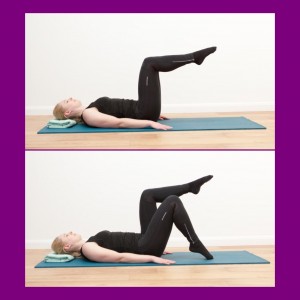
- Crook lying, with your pelvis in a neutral position, engage your deep stomach muscles and pelvic floor muscles
- Bring your legs up one at a time into double table top (90 degree bend at the hip, 90 degree bend at the knee) and hold them there
- Tap one foot down to the floor, then return it to double table top
- Repeat with the other leg
- Repeat 10 times on each side, alternating legs
One leg stretch (advanced level)
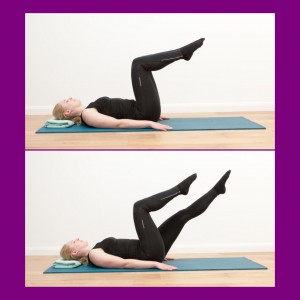
- Crook lying, with your pelvis in a neutral position, engage your deep stomach muscles and pelvic floor muscles
- Bring your legs into double table top as you did with Scissors
- Stretch one leg away, making sure you keep your lower back still on the floor (don’t let it arch or twist), then bring your leg back into double table top
- Repeat with the other leg
- Repeat 10 times on each side, alternating legs
This article has been provided to give only general advice to new mums regarding graded return to exercise post partum. It does not replace individualised assessment and advice provided by healthcare professionals. When following advice from the article, if you experience pain or discomfort, please stop and seek advice and assessment from a healthcare professional. If you are not sure whether you have pelvic girdle pain or diastasis recti, please ask your healthcare professional.
Anna Meggitt of Animated Physiotherapy provides 1:1 pilates assessments and 1:1 / 2:1 sessions at:
Finely Tuned Physio
Unit A1
The Foundry
Russell Gardens
Wickford
SS11 8BH
She also runs small group classes across Essex in Rayleigh, Orsett, & Downham / Billericay. Click here for class details.
Bookings available by phone on 07759884594 or email [email protected].

